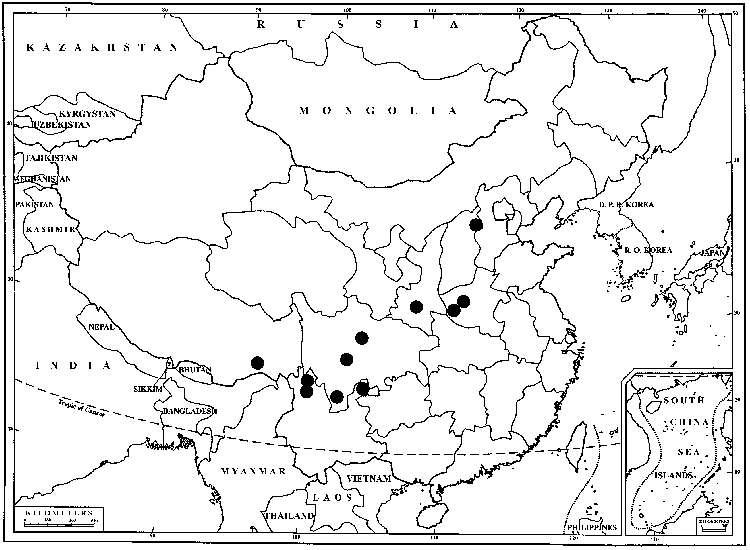Difference between revisions of "Didymodon giganteus"
Laubm. Fl. Oesterr.-Ung., 102. 1882,.
FNA>Volume Importer |
FNA>Volume Importer |
||
| Line 27: | Line 27: | ||
|elevation=low to moderate elevations (20-1000 m) | |elevation=low to moderate elevations (20-1000 m) | ||
|distribution=B.C.;N.W.T.;Alaska;Europe;Asia. | |distribution=B.C.;N.W.T.;Alaska;Europe;Asia. | ||
| − | |discussion=<p>Didymodon giganteus commonly forms large tufts on slopes and ledges in the far North. Several specimens, collected in Alaska, have been seen with the above combination of characters, which is that of European specimens. Many collections, however, that had been previously identified as this species but having weak trigones are either D. ferrugineus or D. maximus.</p> | + | |discussion=<p><i>Didymodon giganteus</i> commonly forms large tufts on slopes and ledges in the far North. Several specimens, collected in Alaska, have been seen with the above combination of characters, which is that of European specimens. Many collections, however, that had been previously identified as this species but having weak trigones are either <i>D. ferrugineus</i> or <i>D. maximus</i>.</p> |
|tables= | |tables= | ||
|references= | |references= | ||
| Line 50: | Line 50: | ||
|publication year= | |publication year= | ||
|special status= | |special status= | ||
| − | |source xml=https://jpend@bitbucket.org/aafc-mbb/fna-data-curation.git/src/ | + | |source xml=https://jpend@bitbucket.org/aafc-mbb/fna-data-curation.git/src/8f726806613d60c220dc4493de13607dd3150896/coarse_grained_fna_xml/V27/V27_804.xml |
|subfamily=Pottiaceae subfam. Barbuloideae | |subfamily=Pottiaceae subfam. Barbuloideae | ||
|genus=Didymodon | |genus=Didymodon | ||
Revision as of 16:57, 18 September 2019
Plants red-brown. Stems often 3–5 cm, central strand present. Stem leaves appressed when dry, spreading or weakly recurved and keeled when moist, monomorphic, elliptic-lanceolate, adaxially grooved along costa, (2–)2.5–4 mm, base scarcely differentiated in shape to elliptic, margins nearly broadly recurved in proximal 1/3–3/4 of leaf, entire, apex acute or gradually acuminate, not fragile; costa percurrent, tapering and distinctly widened at base, widened pad of cells absent, adaxial costal cells elongate, 5–7 cells wide at mid leaf, guide cells in 1 layer; basal laminal cells differentiated medially, rectangular, walls thickened and porose; distal laminal cells 13–15 µm wide, 1:1 or occasionally transversely elongated, papillae absent or simple, low, present only on the back of the leaf near the apex, lumens angular, walls irregularly thickened and trigonous with trigones about the same size as the lumens, weakly convex on both sides, 1-stratose. Specialized asexual reproduction specialized structures absent. Sexual condition sterile. Sporophytes not seen. Distal laminal KOH reaction dark red.
Habitat: Soil, cliff, slopes, lichen tundra, ledges, moist areas
Elevation: low to moderate elevations (20-1000 m)
Distribution

B.C., N.W.T., Alaska, Europe, Asia.
Discussion
Didymodon giganteus commonly forms large tufts on slopes and ledges in the far North. Several specimens, collected in Alaska, have been seen with the above combination of characters, which is that of European specimens. Many collections, however, that had been previously identified as this species but having weak trigones are either D. ferrugineus or D. maximus.
Selected References
None.